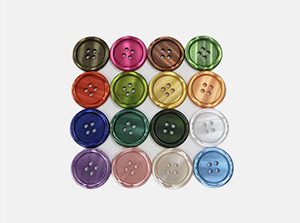What is the viscosity of Polyester button resin?
 Mar 14, 2024|
Mar 14, 2024| View:230
View:230The world of textile manufacturing is witnessing a transformative phase with the integration of advanced materials such as polyester button resin, marking a significant leap in the production of fashion accessories Polyester button resin, a niche segment within the polyester resin family, is meticulously designed for the crafting of high-quality, durable buttons, playing a pivotal role in the aesthetics and functionality of garments. The viscosity of this specialized resin is a fundamental parameter, influencing not only the manufacturing process but also the design innovation and sustainability practices in the fashion and textile industries.
Polyester button resins unique properties, including its chemical resistance, strength, and adaptability, are enhanced by its specific viscosity characteristics. This attribute essentially dictates the materials flow behavior, which is crucial for achieving precision in button designs and ensuring a flawless finish. The viscosity range for polyester button resin is carefully optimized to balance fluidity with solidification times, thereby accommodating diverse mold designs from intricate vintage styles to sleek, modern aesthetics.
The process of adjusting the viscosity of polyester button resin involves sophisticated formulation techniques. Additives such as plasticizers are used to lower the viscosity for intricate mold designs, ensuring the resin can easily fill detailed patterns without introducing air bubbles or imperfections. On the other hand, fillers or thickeners may be introduced to increase viscosity, aiding in the production of larger button designs where material strength and dimensional stability are paramount.

This meticulous control over viscosity not only facilitates the creation of diverse button designs but also enhances the efficiency of the manufacturing process. It reduces waste by minimizing the occurrence of defective products and streamlines the production cycle, contributing to more sustainable manufacturing practices. Moreover, the ability to fine-tune the resin's properties allows manufacturers to respond swiftly to fashion trends, offering customizable solutions that meet the rapidly changing demands of the fashion industry.
Beyond its impact on production and design, the viscosity of polyester button resin also has implications for the end-use performance of buttons. It influences factors such as the button's resistance to wear and tear, its capability to withstand washing and drying processes, and its overall longevity. As such, understanding and optimizing the viscosity of polyester button resin is crucial for manufacturers aiming to produce high-quality, durable buttons that align with the sustainability goals and aesthetic expectations of modern consumers.
In conclusion, the viscosity of polyester button resin is a critical factor that bridges the gap between material science and fashion design. It enables the production of buttons that are not only visually appealing but also durable and environmentally friendly. As the textile industry continues to evolve towards more innovative and sustainable practices, the role of materials like polyester button resin, with their customizable properties and versatile applications, will undoubtedly expand. This exploration into the viscosity of polyester button resin underscores the intricate interplay between technical precision and creative vision, heralding a new era of possibilities in textile accessories manufacturing.




















